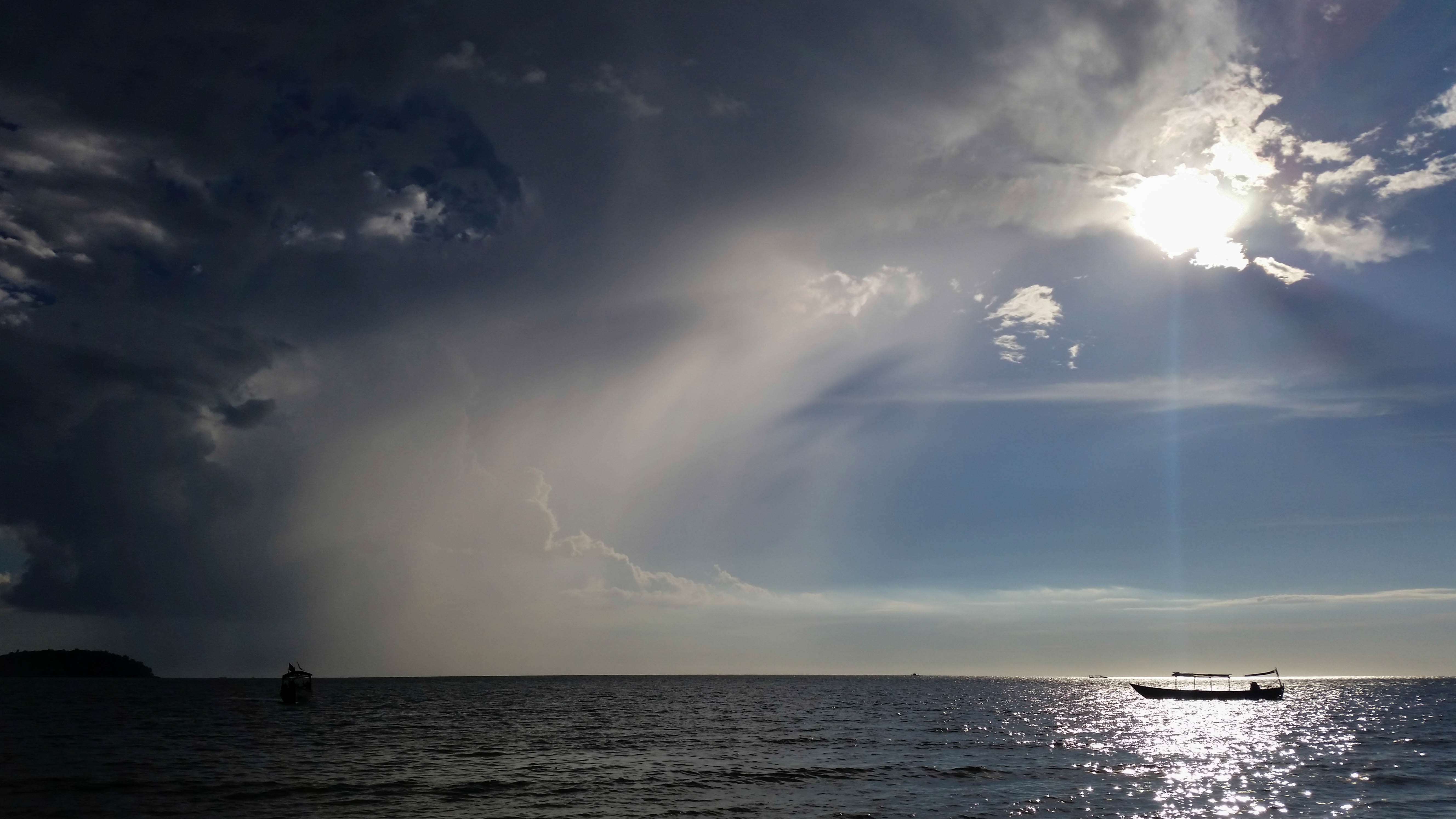When Lightning Strikes: Safety Tips For Fishermen
OutdoorHub Reporters 04.26.18

An unexpected thunderstorm can turn your fishing trip into a real life nightmare.
The effects of lightning striking a boat can be catastrophic: fried electronics, a blown out transducer or even death. According to a study conducted by NOAA, 64% of lightning-related deaths happened while people were enjoying leisure activities, and fishing topped the list with 26 deaths that year.
Therefore, it’s essential that you’re prepared in case you’re ever unexpectedly caught in a lightning storm. Learn some safety tips for staying safe when lightning strikes.
Prevention is key
The best way to avoid danger while on a fishing trip is to make sure you aren’t on the water when the storm begins. Nonetheless, it’s easier said than done, since localized or local storms aren’t always reported.
However, it’s still a good idea to track weather reports via an app, online, or VHF, as they can give you some insight into the chances of a storm forming in the area. As soon as you hear thunder and see lightning, count the seconds between them, and divide by five so you have an estimate of how far away the storm is from where you are.
When you’re caught in the storm

You can’t always avoid getting caught in a storm, though there are still lots of things you can do to prevent being struck by lightning, or lessen damage and injury if you’re not so lucky.
If you find yourself in the middle of a storm and you can’t make it back to shore, you’ll need to wait it out. Think back to what you learned in grade school, that lightning will always seek the highest point, and on a boat, that will typically be a fishing rod, an antenna, or a mast.
As much as possible, find an area that’s protected from wind and drop your anchor. All people should put on their life jackets, remove all metal jewelry, and head inside the cabin if the boat has one. Otherwise, crouch down in the center of the boat. You should stay away from appliances, electrical outlets, and metal objects.
Remember that side flashes can jump between metal objects or between metal and another object as they look for a path to water, so stay away from anything metal to avoid a shock.
Protect your marine electronics

It’s recommended that you lower your outriggers, fishing rods, towers, and antennas and never use your VHF radio unless you are in a state of emergency. As we previously mentioned, don’t touch anything metal, especially two metal objects at once such as a metal railing and metal steering wheel, as that spot could be deadly. If you need to steer, do so with a wooden object or wear insulating gloves.
When you’ve been hit by lightning
Following these tips and being prepared won’t guarantee you won’t get hit by lightning. If you are hit directly, follow these steps:
- Check for anyone injured or unconscious. If they are breathing and moving, they will most likely be fine. A person that is not breathing or unconscious will need immediate CPR and medical attention as soon as possible.
- Check the bilges for any sign of water. Although rare, through-hulls and transducers can be blown out by a lightning strike, and the hit could have even blown a hole in the boat. If this is the case, do whatever you need to stay afloat: work the bail bucket, plug the hole, etc. Call for assistance as soon as possible, either with your VHF or a flare kit.
- If there are no significant leaks, holes, or injuries, wait out the storm. Check all electronics as well as engine function once the storm has passed.
Most storms pass in around 30 minutes, but stay alert for the next hour or so, and wait at least 20 minutes before resuming any activities. Remember that the most important thing is your health and safety!

